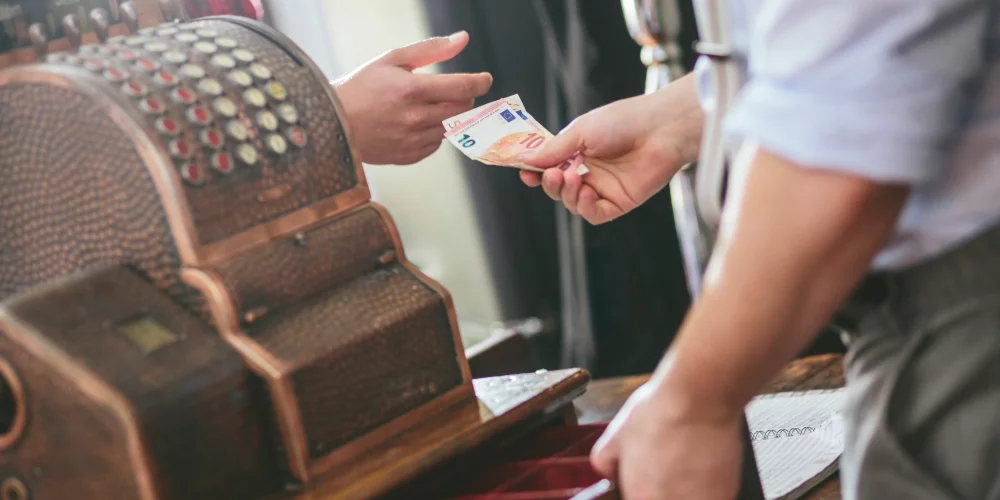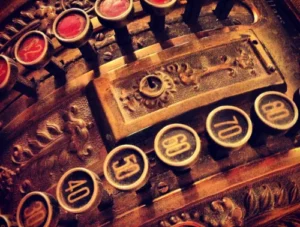
There’s something quietly eerie about walking through a mall that’s lost its pulse. The shops still stand, paint peeling at the edges, steel shutters halfway down. A few plastic chairs lean against deserted takeaways. And tucked somewhere near the old entrance or the grocery store exit, there’s almost always a lonely figure standing mute, an abandoned lottery machine.
Once brightly lit, humming with the quiet energy of small hopes, these machines now sit dormant. The screens are either switched off or frozen mid-glitch, a faded “OUT OF ORDER” message burnt into the display. But for anyone who lived through the first big wave of South Africa’s National Lottery in the early 2000s, those machines are more than relics. They’re memory markers.
South Africa’s first National Lottery launched in 2000, and with it came these terminals, planted in supermarkets, corner cafés, even petrol stations. They weren’t just places to play. They were where old men argued about football odds, where grandmothers queued with tightly folded notes, where kids pressed their faces to the glass display dreaming about winning a lifetime’s supply of cooldrink and bakkies. Today, things have changed. Most betting happens on phones. Apps load faster than terminals, payouts hit e-wallets instead of cash tills. The machines that once pulsed at the heart of local malls have been left behind, not deliberately, but inevitably.
But that doesn’t mean they’ve vanished. Drive through smaller towns, Newcastle, Umtata, parts of Polokwane, and you’ll spot them, out-of-service lottery kiosks standing like forgotten monoliths in half-busy shopping centres. Covered in dust. Sometimes wrapped in clingfilm. Sometimes scribbled over with marker pen graffiti. A reminder that before data bundles, luck had a different face.
For photographers and cultural documentarians, these machines have quietly become a fascination. Some treat them like urban fossils, signs of a specific era in South Africa’s modern history. Much like payphones or VHS rental stores, they capture a moment between worlds, the analogue-leaning, post-apartheid consumer landscape meeting the digital future. There’s also something deeply human in their continued presence. While some machines are dead silent, others still flicker on. In places where Wi-Fi is patchy and not everyone trusts a mobile app, there’s the odd shopkeeper who keeps a terminal running. You’ll find old customers shuffling in, shaking coins from worn purses, punching in quick picks with care.
In these pockets, the machine isn’t just a tool, it’s part of local routine. In the same way barbershops or shebeens hold social energy, so too did these kiosks. There’s a specific memory muscle South Africans have around them, the weight of a plastic ballpoint on a betting slip, the machine’s dull electronic chirp, the silence after a losing ticket printed out.
But it’s also worth asking, why are so many machines left standing at all? In countries like the UK or the US, outdated tech gets removed fast, replaced by sleeker alternatives. In South Africa, there’s a slower churn. Part of it is logistical, removal costs money. But part of it, arguably, is cultural. Disused spaces and objects often linger longer here, occupying a kind of liminal role between memory and utility.
 Retail experts point out that keeping old lottery machines around can serve as quiet placeholders for future installations. Once a machine has power and data lines set up, it’s easier to swap it for a new terminal than to reinstall everything from scratch. But there’s more to it than just wiring. These machines, especially in townships and second-tier malls, were community anchors. Removing them isn’t just about clearing hardware, it’s about pulling out roots.
Retail experts point out that keeping old lottery machines around can serve as quiet placeholders for future installations. Once a machine has power and data lines set up, it’s easier to swap it for a new terminal than to reinstall everything from scratch. But there’s more to it than just wiring. These machines, especially in townships and second-tier malls, were community anchors. Removing them isn’t just about clearing hardware, it’s about pulling out roots.
The economic backdrop is important too. In places where formal employment is erratic, where informal economies pulse louder than corporate ones, betting, whether through the national lottery, sports books, or casino apps, carries its own social weight. It’s not just about money. It’s about hope, control, pacing your day around the possibility of change. And those old machines? They’re reminders of that dynamic’s earliest days.
For younger South Africans, many of whom have grown up mobile-first, these lottery kiosks might seem quaint or irrelevant. But speak to anyone over 35, and the nostalgia kicks in. A shop clerk in Umlazi recalls, “There was always someone at that machine. Even just to check yesterday’s numbers. Even if you didn’t play, you watched.” And so the abandoned kiosks live on, not as functioning terminals, but as echoes. A kind of architectural ghost. Dusty glass. Faded sticker logos. Screens locked in permanent error states.
It’s easy to dismiss them as junk. But look closer, and they tell a deeper story, about how chance was once something public, shared, spoken out loud, not hidden behind passwords and privacy screens. About how small-town malls, now quieter, edged out by app culture and online shopping, once thrummed with daily rituals built around these machines.
And maybe, in that way, these leftover terminals do serve a final purpose. Not as machines, but as monuments. Markers of an era when luck wasn’t just digital, when it required showing up in person, standing in line, sharing a moment with a stranger while both of you waited for the slip to print out.







